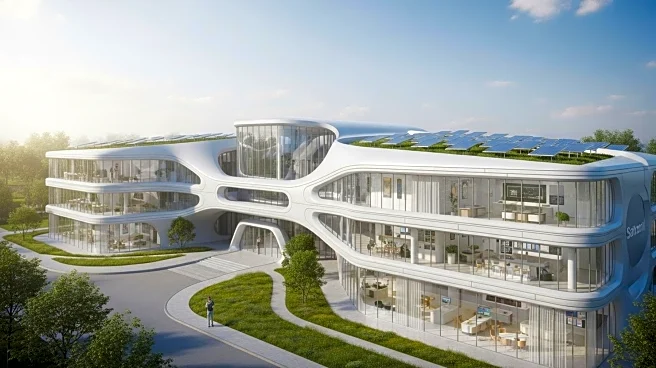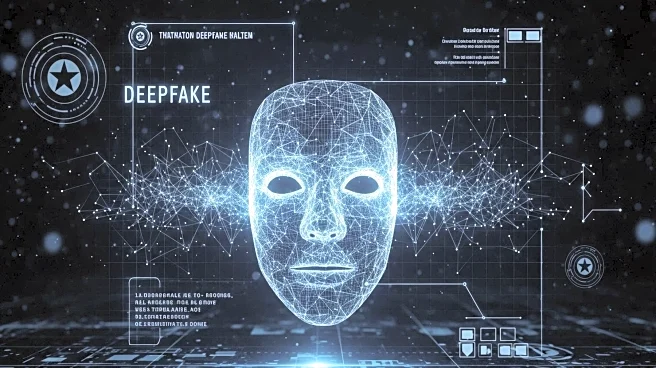What's Happening?
Mt. Hope Elementary School in Lansing, Michigan, has become the first U.S. building with an electrical system designed entirely by artificial intelligence. Utilizing Augmenta's generative design tool, the AI-driven process reduced design time by one-third and cut material waste by 15%. This development highlights the potential of AI-designed infrastructure to improve building efficiency, reduce costs, and enhance functionality. The integration of AI in building design is not only a construction innovation but also a catalyst for healthier and more adaptable work environments, improving employee wellness through better lighting, air quality, and energy efficiency.
Why It's Important?
The use of AI in building design represents a significant shift in how infrastructure can be developed to enhance employee wellness and operational efficiency. By optimizing environmental factors such as lighting and air quality, AI-driven designs can contribute to healthier workplaces, potentially increasing productivity and job satisfaction. This approach could lead to broader adoption across various industries, influencing how companies plan and manage their workspaces. The reduction in design time and material waste also suggests economic benefits, making AI a valuable tool for cost-effective and sustainable building practices.
What's Next?
As AI-driven design tools continue to evolve, more schools and workplaces may adopt similar technologies to improve their infrastructure. This could lead to increased demand for AI solutions in construction and design, prompting further innovation and development in the field. Stakeholders, including educational institutions and corporate entities, may explore partnerships with AI technology providers to leverage these benefits. Additionally, regulatory bodies might consider establishing guidelines to ensure the ethical and effective use of AI in building design.
Beyond the Headlines
The integration of AI in building design raises questions about the future role of traditional architects and designers. While AI can enhance efficiency, the human element in design remains crucial for creativity and cultural considerations. Ethical concerns regarding data privacy and the environmental impact of AI technologies may also emerge, necessitating careful oversight and regulation.












